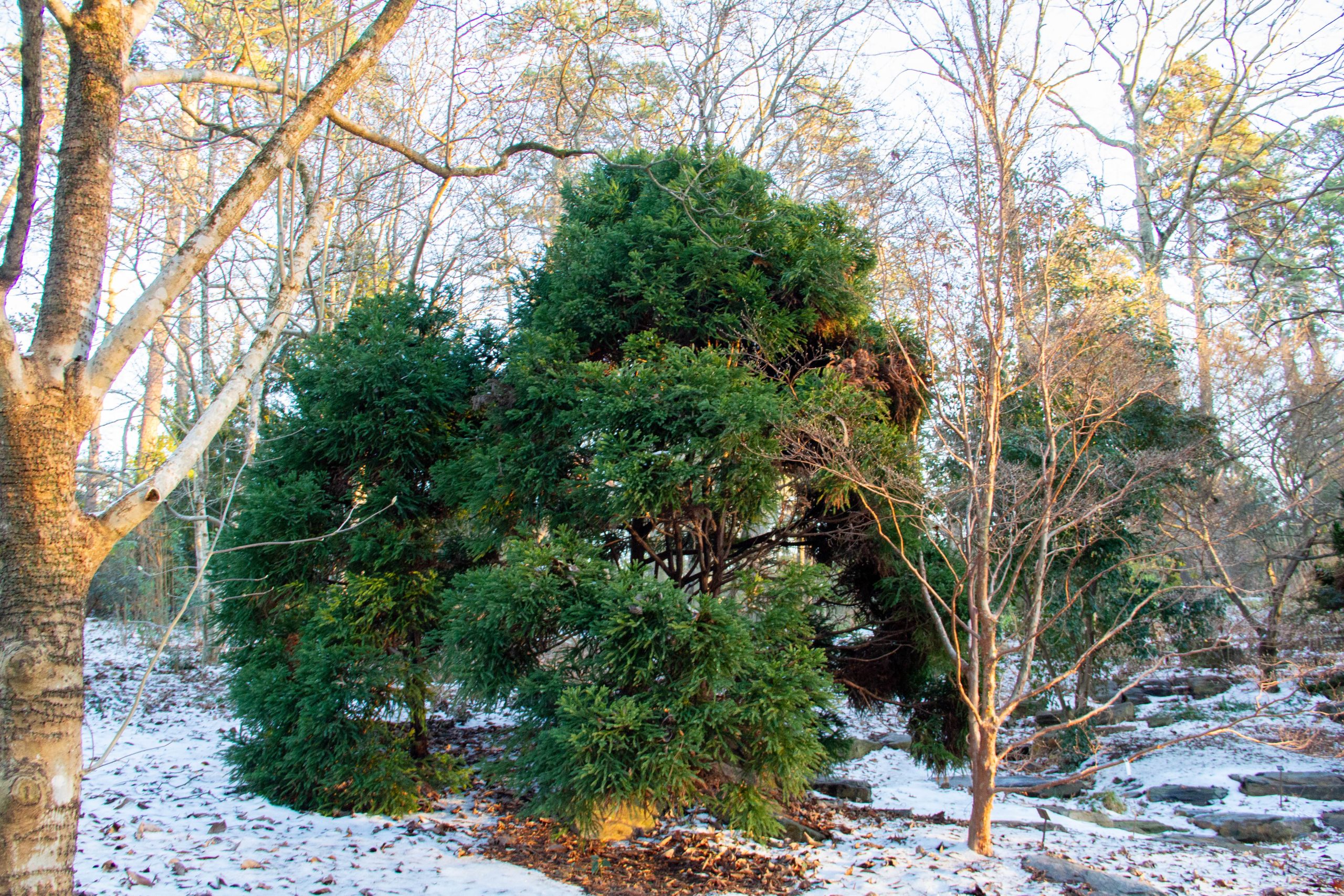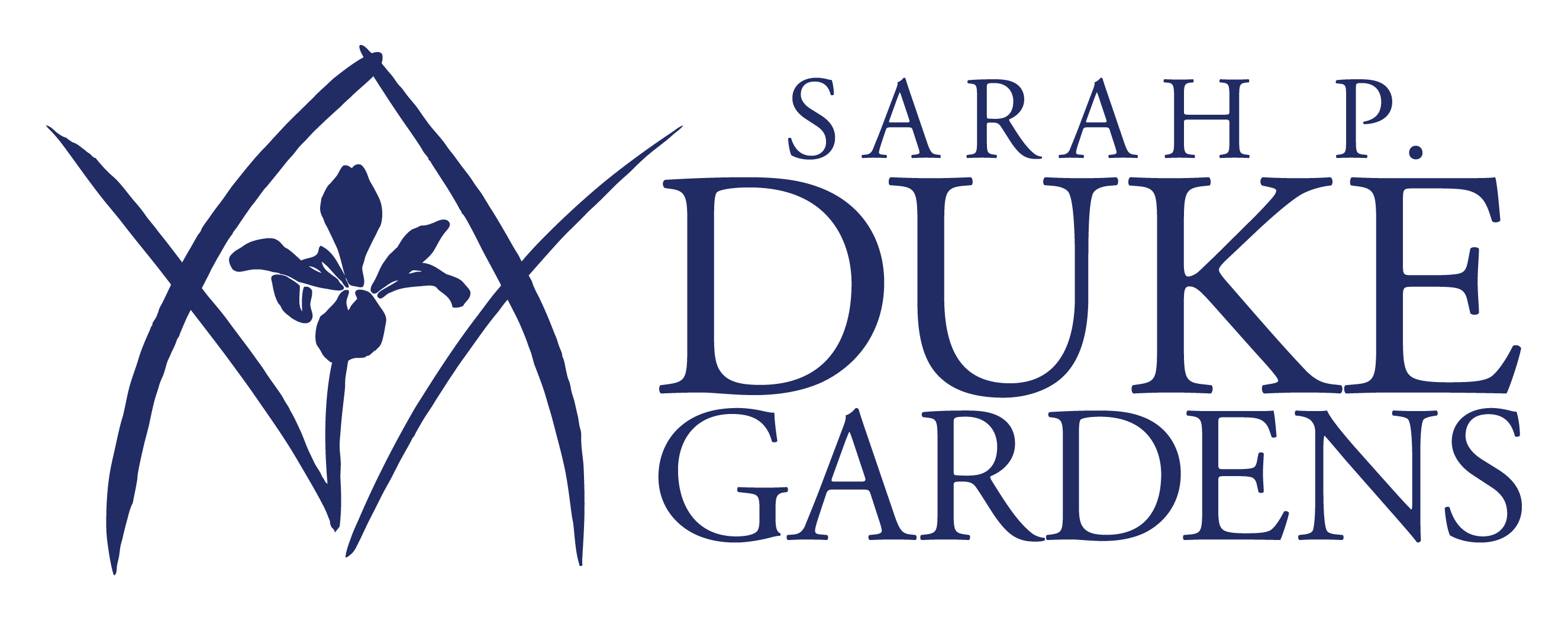
Photo by Ethan Cho T’28
cBotanical name: Cryptomeria japonica ‘PIICJ-I’ Chapel View™
Common name: Chapel View™ Japanese Cedar
Family name: Cupressaceae (Cypress family)
Native range: Garden origin
Location in Duke Gardens: Culberson Asiatic Arboretum
USDA Hardiness Zones: 6-9
Have you ever wondered where the plants for sale at nurseries and stores originally come from? In the case of the eponymous Duke Gardens plum yew (Cephalotaxus harringtonia ‘Duke Gardens’), the answer is Duke Gardens itself. In the case of Chapel View™ Japanese cedar (Cryptomeria japonica ‘PIICJ-I’ Chapel View™), the answer is equally close to home, in the form of a unique mutation on an otherwise ordinary Japanese cedar on Duke University’s campus that Culberson Asiatic Arboretum curator Paul Jones spotted en route to Duke Gardens in the mid-1990s.
Witch’s brooms—naturally occurring mutations that form distinctive masses of tangled branches—are a common source of dwarf or otherwise unusual cultivars with ornamental appeal. When propagated via grafting or cuttings, the resulting trees typically retain the same characteristics as the original witch’s broom. Intrigued by the possibilities, Jones requested permission from the university grounds department to climb approximately 30 feet into the tree canopy and take cuttings, ultimately resulting in three specimens of this unique genotype, which he planted on a hillside in the Arboretum adjacent to the deciduous magnolia collection.
This selection remained unnamed until noted plantsman Michael Dirr visited the Arboretum in 2004 and suggested to Jones it would be perfect for the commercial horticulture trade. After further negotiation with stakeholders, the selection was ultimately given the trade name Chapel View™, coined by Jones in honor of its Duke connections. It was then distributed as part of Dirr’s First Editions® Collection. Because trademarks are marketing tools that identify a plant’s origins, and not an official name (similar to the difference between “Band-Aid®” as a specific brand versus generic “adhesive bandages”), the cultivar is formally known as Cryptomeria japonica ‘PIICJ-I’ in botanical nomenclature, though it is almost exclusively referred to by its trade name in casual speech.
In addition to its Duke connections, Chapel View™ cryptomeria has two major advantages for local gardeners. Unlike many popular cryptomeria cultivars on the market, its branches remain green and lush in the winter instead of “bronzing” in the cold. Furthermore, healthy trees rarely, if ever, produce unsightly brown male cones, which can detract from the overall appearance. Although not a true dwarf cultivar, over time this slow-growing cedar develops a roughly globose (round) shape capped by a pyramidal tuft, with the exact shape determined by the soil conditions and overall amounts of sunlight. There is really nothing quite like it on the market—and that’s exactly why Jones likes it.
The original Chapel View™ trio can still be found in the Culberson Asiatic Arboretum, with the best views looking uphill from the stone footbridge near the large red Meyer Bridge over the pond. As these trees have grown over the decades, they have filled in the original space between them, creating the illusion of one large tree instead of three smaller ones. A more recently planted specimen, with its foliage and branches closer to eye level, is directly off the path heading towards Pine Clouds Mountain Stream and the Ruth Mary Meyer Japanese Garden from the Meyer Bridge. Although unavailable from the Duke Gardens store—currently closed in preparation for Garden Gateway construction—visitors inspired to introduce this selection to their own gardens will find it available online from a variety of nurseries and home gardening stores.
